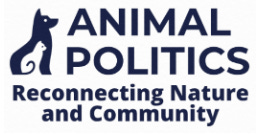Animal Politics: The No-Kill Gold Standard
The Per Capita Kill Rate Reveals No-Kill Success or Failure
In the realm of animal welfare, the "no-kill" ethic has emerged as a transformative and often debated philosophy. Aimed at saving as many animals as possible, this approach has garnered praise for its compassionate objectives and faced scrutiny for its potential unintended consequences. As a dedicated advocate for animal welfare, I have witnessed the profound impact of no-kill policies and understand their complexities and challenges.
The No-Kill Ethic: A Compassionate Approach
More than a policy and statistical objective, “no-kill” is a principle and an ethic, and once applied, the practical consequences begin to fall into place. The principle is that animal shelters should apply the same criteria for deciding an animal’s fate that a loving pet guardian or conscientious veterinarian would apply. That is, healthy and treatable animals are not killed simply due to a lack of room or resources to care for them.
Measuring Success: Three Key Metrics
To assess the effectiveness of no-kill policies, shelters often use three primary metrics: the Live Release Rate (LRR), the Euthanasia Rate, and the Per Capita Kill Rate. While each metric provides valuable insights, the Per Capita Kill Rate stands out as the most comprehensive indicator of a shelter's impact on the community.
Live Release Rate (LRR)
The LRR measures the percentage of animals leaving the shelter alive, whether through adoption, rescue transfers, or returns to owners. I call this “heart beats in, heart beats out”. Contrary to popular belief, this metric has limited value in assessing a shelter's performance in a community.
Euthanasia Rate
The Euthanasia Rate, essentially the inverse of the Live Release Rate, tracks the number of animals euthanized. This metric is also helpful for internal assessment of programs and policies, but has little value in evaluating community impact.
Neither the Live Release Rate nor the Euthanasia Rate fully captures the impact of a shelter’s policies on the broader community. These metrics can be easily misinterpreted, suggesting a shelter is either failing or succeeding without proper context. As communities approach no-kill status, shelters will impound a higher proportion of seriously sick, injured, or behaviorally challenged animals, as the more adoptable animals are already placed in homes. Without tracking the per capita kill rate, shelters may be unfairly condemned for failing when they are actually succeeding. This ever changing dynamic affects the accurate interpretation of both the LRR and the Euthanasia Rate.
The Per Capita Kill Rate – The Gold Standard
The Per Capita Kill Rate calculates the number of animals killed per 1,000 residents. This calculation is not subject to misinterpretation. This is the standard epidemiologists use to determine disease and accident rates in a community. It is the gold standard for understanding what’s happening in a community. It provides the most insightful measure of a community's overall animal welfare efforts. This metric accounts for community size and allows for meaningful comparisons between different regions, highlighting the societal impact of shelter policies.
Case Study: New York City
I was prompted to write this article because I recently received an angry newsletter from a NY watchdog organization. The organization was upset that NYC’s Animal Care Centers’ kill rate increased 13% in 2023. To be sure, 13% sounds catastrophic. However, when put into perspective, the numbers tell a different story. When I first arrived in NYC as executive director in 2003, ACC was impounding around 60,000 animals a year and euthanizing 60% (36,000). In 2023, ACC impounded 14,400 animals, a 76% decrease in impounds; and euthanized 3,235 animals, a 90% decrease in killing. This reduction shows significant progress.
Given that 3,235 pets were euthanized in 2023, and the human population of New York City is approximately 8,335,897, the per capita kill rate is approximately 0.388 per 1,000 residents – one of the lowest, if not the lowest, kill rate in the United States.
Case Study: Los Angeles City and County
In my first year as General Manager of LA Animal Services, the City and County of Los Angeles, with a human population of about 10 million, cut their shelter killing rate in half in 2006 compared to 2003, achieving a per capita kill rate of 3.94 per 1,000 residents. This rate was lower than San Francisco’s kill rate in 1994, the first year of the Adoption Pact that made San Francisco the first no-kill city.
Case Study: Maricopa County

Beyond Measurement: The Path to Effective Management
A timeless adage in management states, "What can't be measured, can't be managed." This principle highlights a fundamental issue with relying solely on the Live Release Rate (LRR) as a gauge of success in animal welfare. The LRR, while informative, falls short of capturing the full scope of a community's impact on animal welfare. It's when we pivot to monitoring the Per Capita Kill Rate that we unlock the ability to truly assess and refine our efforts.
In my recent experience working with open admission animal shelters across northern Arizona, Washington, Texas, and Florida, I've witnessed firsthand the transformative power of focusing on the Per Capita Kill Rate. We've achieved remarkable milestones, with rates dipping as low as 0.01. These shelters also boasted high LRRs and low euthanasia rates, yet those metrics, despite their generally positive trends, acted as shifting sands—never offering the concrete feedback needed for precise management.
The Per Capita Kill Rate, in contrast, provides a stable and clear benchmark. It allows for the effective evaluation of programs and policies, ensuring resources are allocated where they can make the most significant impact. This shift in focus doesn't just aim for improvement; it demands it, offering a clear path to truly impactful animal welfare management.
The Crucial Role of the Per Capita Kill Rate
The Per Capita Kill Rate is essential for understanding the broader impact of shelter policies and programs on the community. Unlike the Live Release Rate and Euthanasia Rate, which are moving targets and focus primarily on internal shelter performance, the Per Capita Kill Rate provides a standardized comparative measure that allows for benchmarking against other regions and communities. This metric emphasizes the effectiveness of public education, spay/neuter programs, and adoption initiatives, offering a realistic and meaningful assessment of, and goal for, reducing euthanasia and improving animal welfare.
Conclusion
The no-kill ethic represents a compassionate approach to animal welfare, necessitating careful implementation and ongoing evaluation. By focusing on the Per Capita Kill Rate alongside other metrics, shelters and communities can gain a comprehensive understanding of their progress and challenges. This metric not only fosters a spirit of healthy competition and shared learning but also ensures that efforts lead to positive outcomes for both animals and communities.
As we strive for a no-kill nation, it is vital to balance compassion with practicality, ensuring that our policies are effective and sustainable. The Per Capita Kill Rate is a powerful tool in achieving this balance, providing an irrefutable measure of success in our collective mission to save animal lives.
Explanation of the Per Capita Kill Rate Calculation
The Per Capita Kill Rate is a metric used to understand the impact of animal euthanasia in a community relative to its population size. This rate is calculated by determining the number of animals euthanized per 1,000 residents in a given area. Here’s a step-by-step explanation of how to calculate it:
Determine the Number of Animals Euthanized: This is the total number of animals that were euthanized in the shelter or community over a specific period, usually a year.
Determine the Human Population: This is the total number of people living in the community or area where the shelters are located.
Use the Per Capita Kill Rate Formula: The formula to calculate the Per Capita Kill Rate is:
*Post Script: Merritt Clifton, publisher of Animals 24-7 originated the use of the PCR metric as a tool for shelter management. Merritt's annual Per Capita Kill Rate Reports were widely recognized within the animal welfare community. These reports provided detailed data on euthanasia rates in various regions, states, counties, and cities across the United States and sometimes internationally. They were valuable resources for understanding trends in animal sheltering and euthanasia practices over time. Animals 24-7 ceased publication of these reports several years ago.
Ed Boks is a former Executive Director of the New York City, Los Angeles, and Maricopa County Animal Care & Control Departments. He is available for consultations. His work has been published in the LA Times, New York Times, Newsweek, Real Clear Policy, Sentient Media, and now on Animal Politics with Ed Boks.








Interesting article today - I believe I know the substack to which you are referring because I received it yesterday also. I can't get too immersed in the numbers because I don't agree with the pressure to get animals out of the ACC as quickly as possible -- i.e. live release rate -- seemingly to anyone with a pulse.
I want to know what criteria (interview questions) is being used since I see so many failed adoptions -sometimes in a short period of time - sometimes in a year or longer. For example - how could a cat be legitimately adopted to someone with a child planning to go off to college -- when the cat was intended for her. Then she does go to college and the cat is returned several months later. Is this right? Cats have feelings too. Or are we slowly but surely returning to the days of Descartes. The cat may well become stressed, less trusting and less likely to be adopted a second or a third time. Or the adoption of a young cat - maybe two years old - who was returned in a very short time because - wait for it. The cat acted like a crazy kitten and was too active.
I know there is a focus on the live release rate around the country - but not on quality adoptions.
We need low cost spay/neuter facilities in NYC - not crazy, temporary irresponsible adoptions. We must keep pressuring the government to do something since animal control is their responsibility.
In the meantime - the ACC should consider educating potential adopters instead of pushing animals at them. Or just give them a stuffed animal
I think we all need to work harder and figure out ways to stop puppy mills, pet stores that sell animals, harsher punishments for illegal breeding, dog fighting, animal abuse and neglect, etc. These are the animals that are euthanized first.
This may not be popular, but I would love to work in a “no kill” shelter surrounded by animals. Unfortunately, as an employee, the pay is unsustainable for most living expenses.
Shelters need more money!
Shelters need expansion and upgrades! Shelters need to be able to offer higher wages to attract more animal lovers, animal trainers, dog walkers, kitty cuddlers, dog beds, toys, etc. We need to socialize as many animals as possible and make the shelter a more inviting place to frequent; and ultimately adopt.
This article was hard for me to read…
I applaud the successes, but the thought of any healthy animal being executed sickens me.
Personally, I would not be able to work in a shelter that euthanized any healthy animal...
Ed, I wish you ran every animal shelter across all nations. You would make the world a better place. I really mean that.